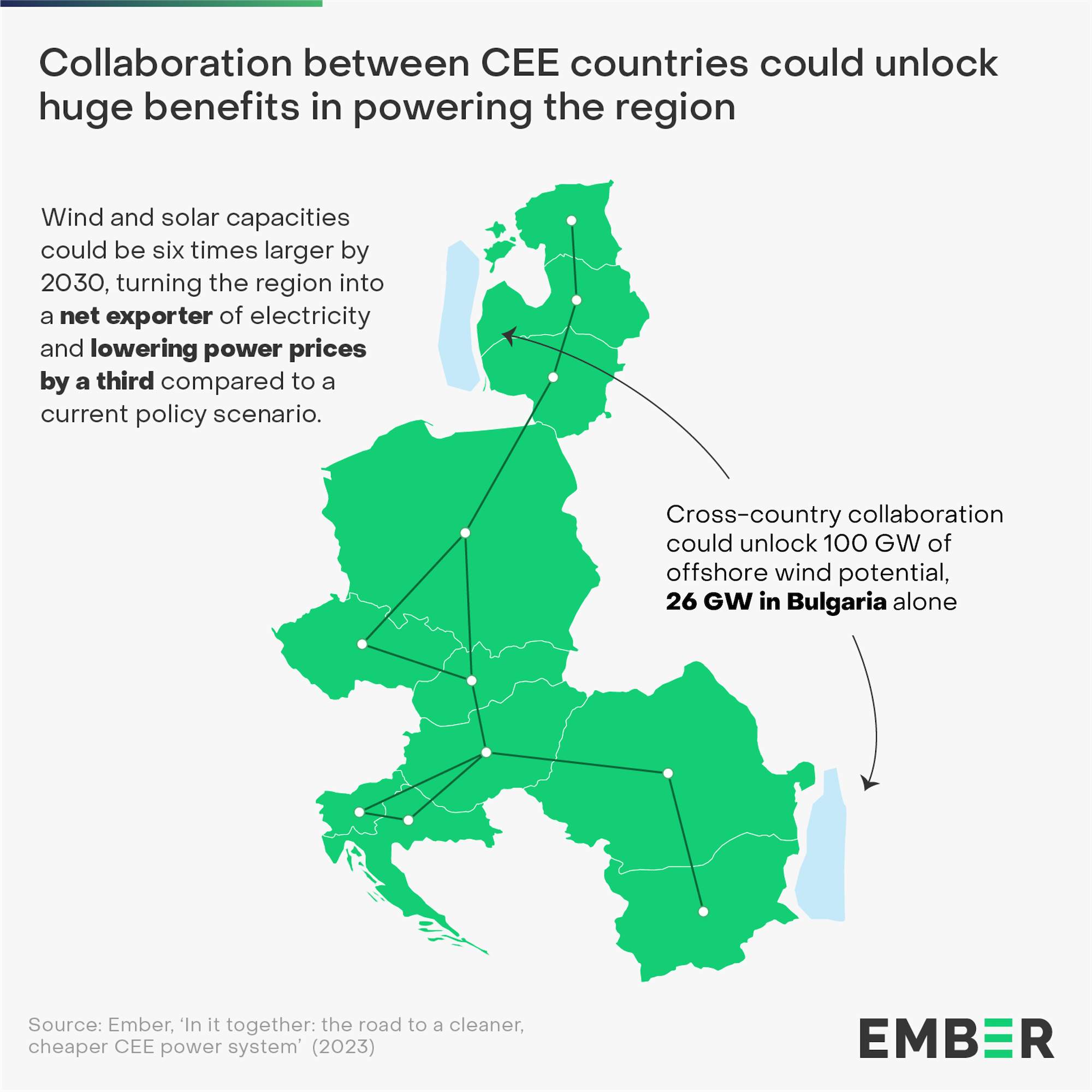
Breadcrumbs
A breath of fresh air: Offshore wind in Bulgaria
After years of debate, Bulgaria could finally unlock the offshore wind potential of the Black Sea, bringing economic and security benefits.
While the first step towards enabling offshore wind in the Black Sea has been taken, several actions need to still be performed until the cheap and clean power from offshore wind starts flowing into Bulgarian homes and businesses.
Ember’s recommendations include:
- Speedy adoption of the new offshore wind law to make possible the development of Bulgaria’s immense, but so far untapped, offshore wind potential, as soon as 2030.
- A strong focus on ensuring social acceptance of offshore wind on the national and community level, including through proactive communication campaigns and strong legal guarantees for effective social engagement and biodiversity preservation throughout the planning and development of the Offshore Energies Development Plan and for individual investment projects. The political commitment and facilitation of stakeholder dialogues is crucial, including through interregional platforms such as the Black Sea Renewable Energy Coalition.
- Swift introduction of Contracts for Difference to minimise risk for offshore wind projects and decrease price burden for final consumers and catch up with the good practices already implemented in more advanced markets, including the adoption of non-price criteria in CfDs, especially pro-biodiversity focused criteria.
- An update of Bulgaria’s National Energy and Climate Plan, with an explicit offshore wind capacity target for 2030.
- Including offshore wind in the transmission grid expansion plan.
- Start planning for a joint Romania-Bulgaria hybrid interconnector connecting both countries and the offshore wind farms.
Supporting Material
Acknowledgements
Paweł Czyżak
ReviewersThe authors would like to thank Ali Candlin and Claire Kaelin from Ember, Dr Mariya Trifonowa from the Center for the Study of Democracy and Apostol Dyankov from WWF Bulgaria for their valuable comments.







Bulgaria is currently discussing the introduction of an offshore wind law, with the second reading in parliament expected to happen after February 22nd. After years of debate, this could finally unlock the offshore wind potential of the Black Sea, bringing benefits such as lowered power prices, the expansion of new industries and a surge in foreign investment.
Featured in the media